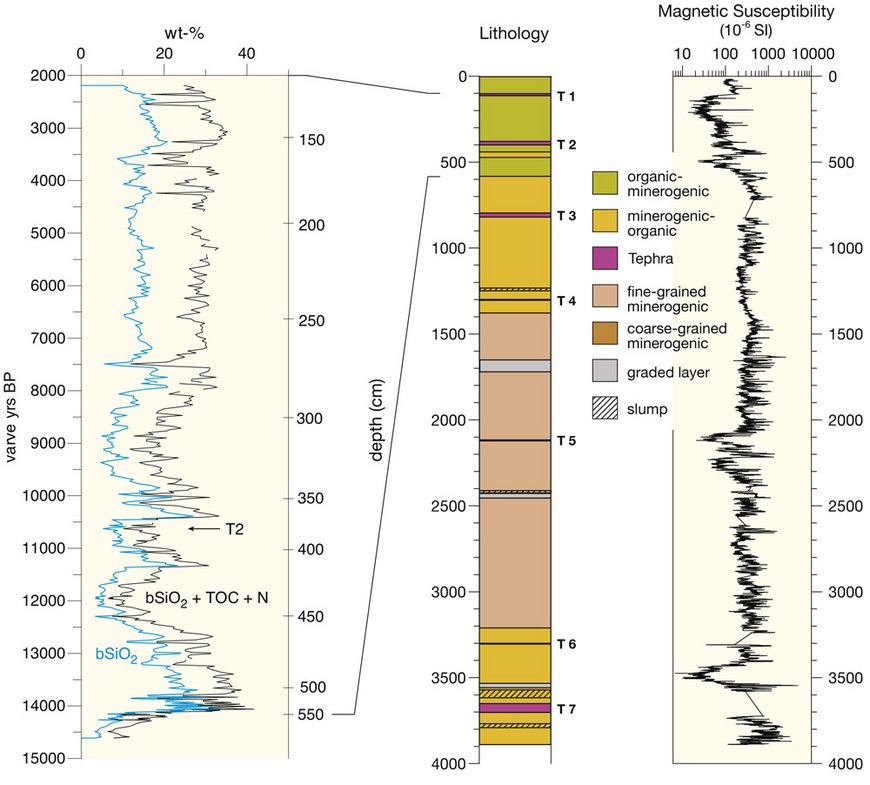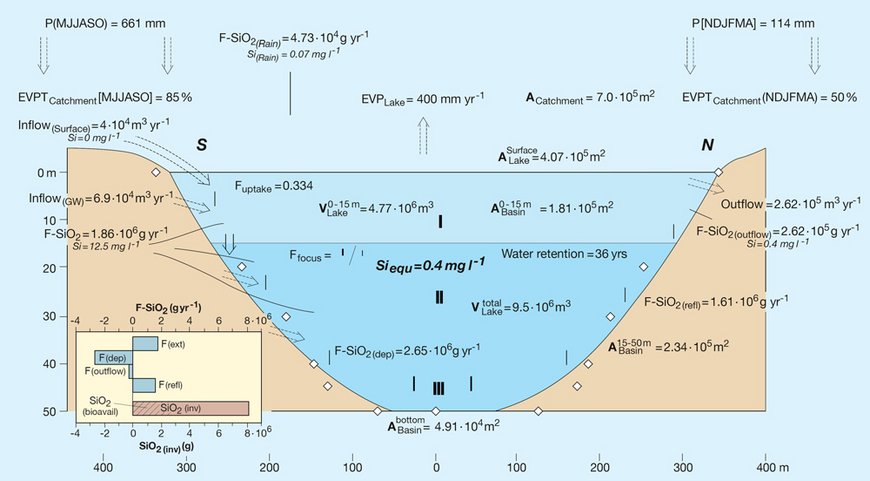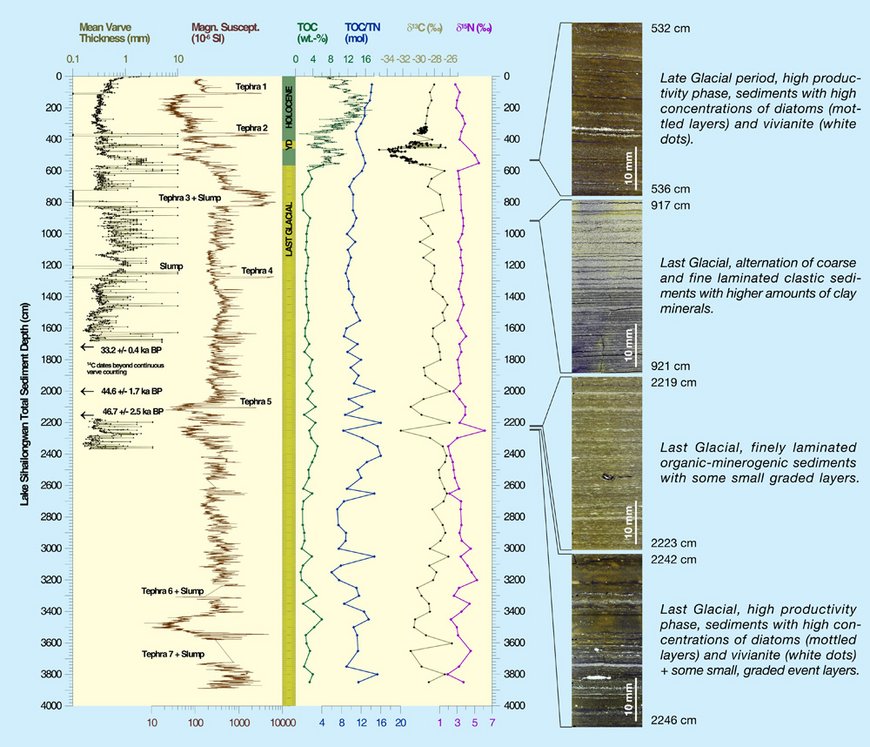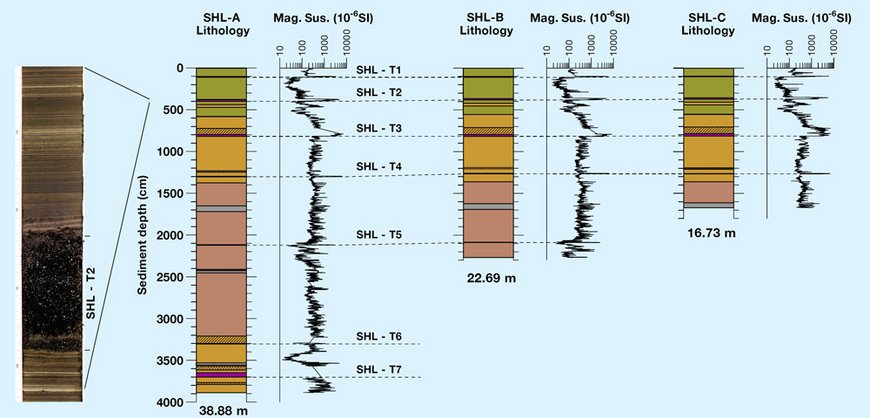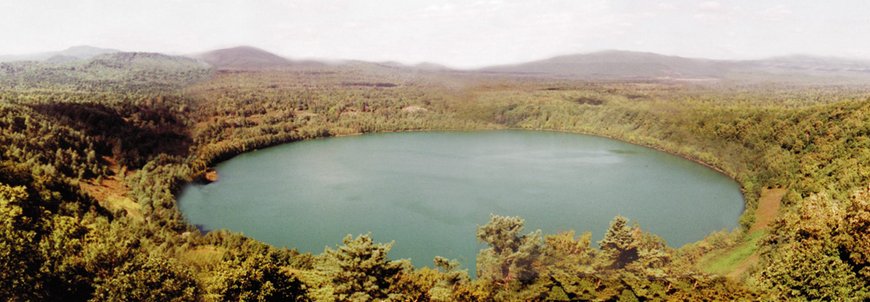East Asian monsoon variability over the last 65.000 years – laminated lake sediments of NE-China, Lake Sihailongwan
Laminated lake sediments are among the most valuable sources of paleoenvironmental and palaeoclimatic information from the human living sphere. Lake Sihailongwan (SHL), a maar lake of the north-eastern Chinese LongGang volcanic field, provides a continuously laminated record of monsoonal variability from a remote area with only minor local human disturbances except for the last 200 years or so.
The strongly seasonal climate with a persistent cold winter monsoon gives the main beat for the laminated sediments of Lake SHL. Regardless of prevailing warmer or colder conditions during glacial or interglacial times, the lake-ice melting with surface runoff each spring provides a steady base for a varve chronology. Of the entire 39 m lake sediment section available from a high-precision coring in AD 2000 the upper 25 m have been counted so far, and comprise the last 65,000 years. Uncertainties of the varve count have been corrected by applying a factor of 1.0622, generated by a comparison of varve ages and 40 calibrated AMS 14C dates. Applying this independent Lake Sihailongwan age model for the last glacial period we find phases with ameliorated climate closely in time with D/O cycles known from Greenland ice core records.
Magnitudes of these interstadials as implied in the Lake SHL pollen record show similar variations, too. However, the impact on lake productivity largely differs between interstadials. Varves from D/O 14 to 17 show similar features as varves from the beginning of the Late Glacial warming, including seasonal diatom sublaminae (mainly Stephanodiscus parvus/minutulus) of several mm thickness, whereas varves of e.g. D/O 8 exhibit only small differences compared to typical stadial varves of Lake SHL. Graded event layers with reworked material from instable soils are hints for prevailing permafrost during most of the last glacial period. As the last glacial period, the Late Glacial also shows strong similarities with circum - North Atlantic palaeoclimate key records, with a short climate setback at about 13 cal ka BP and a well expressed Younger Dryas – like climatic deterioration.
The early Holocene is known from a wealth of Chinese palaeoclimate records as a period with increased summer monsoon intensity. Lake Sihailongwan sediment record of the early Holocene revealed surprisingly high allochthonous minerogenic flux rates. Varve microfacies as well as geochemical investigations proved this clastic influx to be mainly remote dust, deposited in late spring to summer – much later than the current seasonal dust flux maximum in northern China.
Modern human impact is recorded in Lake SHL sediments by increased aeolian influx of siliciclastic matter from remote regions and acidification in the catchment. Human influence on modern local vegetation is only minor.
Partner: J. Liu, P. Rioual, J. Han, H. You, H., G. Chu, Q. Liu (Chinese Academy of Sciences, Beijing), M. Stebich, J. Arlt (Senckenberg, Weimar), A. Lücke, J. Parplies (FZ Jülich)
Backer: GFZ, Chinese Academy of Sciences, DFG
